by
Elena Sakirko and Irina Kozlovskikh
Seismic surveys are ruining the
fragile ecosystems and the lives of people in the vast European North of
Russia. Polluted water, homes shaken by explosions, deforested expanses
– these are just a few of the consequences of surveying in the Usinsk
region of the Komi Republic in Russia.
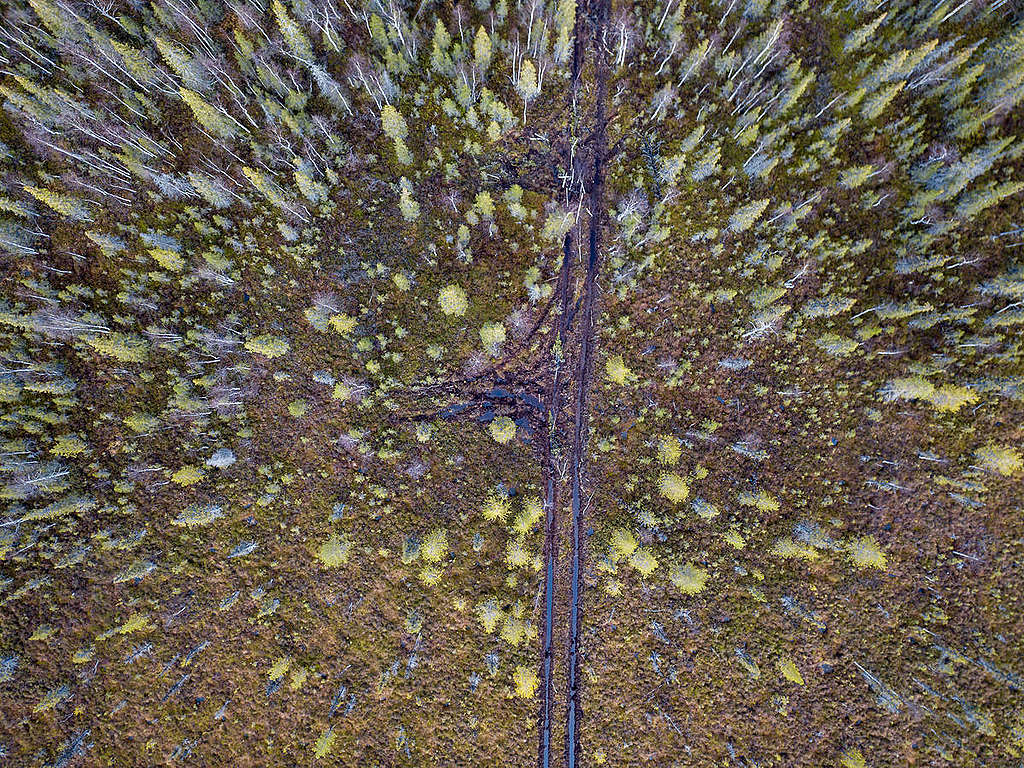 Seismic testing is a geophysical study
of the earth’s crust to look for valuable minerals and oil. The tests
are being conducted carelessly and hastily. In 2017, villagers from
Ust-Usa and Novikbozh demanded an end to oil exploration works in the
lower lands of the Pechora River. They were afraid of the river getting
contaminated, fish dying, massive deforestation, and wild animals facing
extinction, as well as the destruction of the forest where they pick
berries and mushrooms.
Seismic testing is a geophysical study
of the earth’s crust to look for valuable minerals and oil. The tests
are being conducted carelessly and hastily. In 2017, villagers from
Ust-Usa and Novikbozh demanded an end to oil exploration works in the
lower lands of the Pechora River. They were afraid of the river getting
contaminated, fish dying, massive deforestation, and wild animals facing
extinction, as well as the destruction of the forest where they pick
berries and mushrooms.
Forests are cut down in search of new oil deposits. Streams and swamps get polluted. But despite the protests, seismic surveying is still happening. Here’s what we found on an expedition to the region.
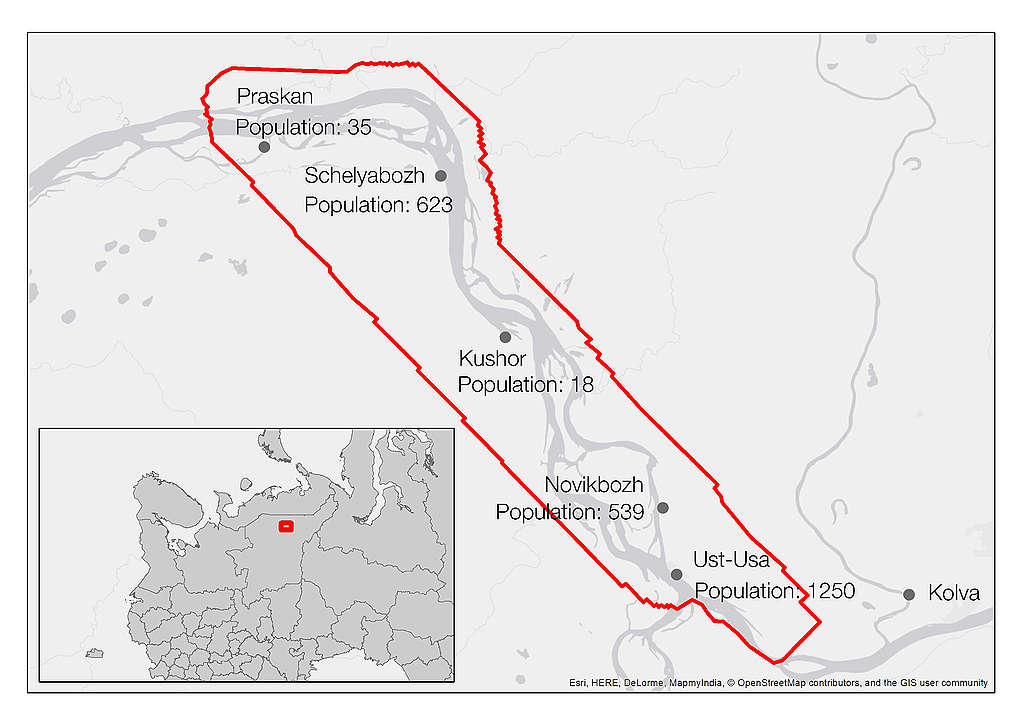
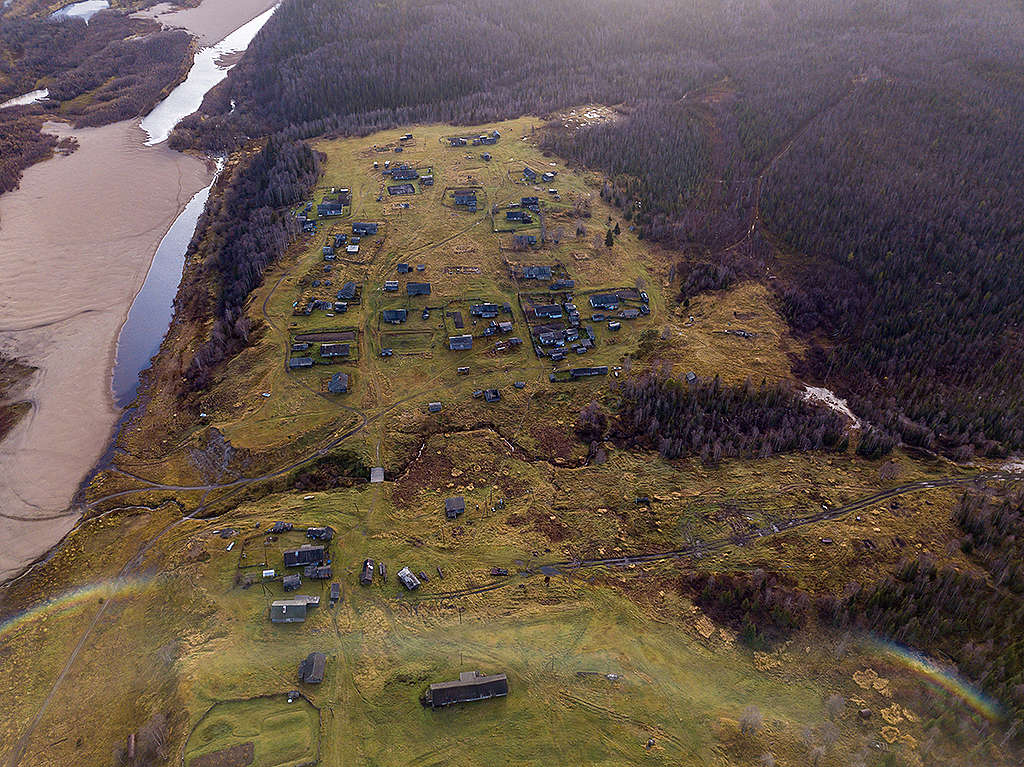 A jet flare is burning with orange
light on the back of the grey sky. Gas (hydrogen sulphide) is burnt in
this oil field, as it is in many other fields in the Usinsk region. Kushor
is located between two hills, separated by a brook that is mostly mud.
Heavy vehicles belonging to Lukoil-Komi are moving upstream, pushing
huge amounts of mud into the once clean river.
A jet flare is burning with orange
light on the back of the grey sky. Gas (hydrogen sulphide) is burnt in
this oil field, as it is in many other fields in the Usinsk region. Kushor
is located between two hills, separated by a brook that is mostly mud.
Heavy vehicles belonging to Lukoil-Komi are moving upstream, pushing
huge amounts of mud into the once clean river.
When we visit the workers at the Lukoil site, they’re fetching water from the marsh brook in the forest. It’s a little yellow and cloudy, but the only pure water here is in the well of a local man named Ivan, and there’s not enough for everyone.
We’re visiting a Seismic profile; a clear-cut used to place the facilities and equipment to conduct works on mineral exploration. We find paths that the locals use to pick berries and mushrooms and to hunt. Traditionally each Komi family has a right to own a path which provides them food all year.
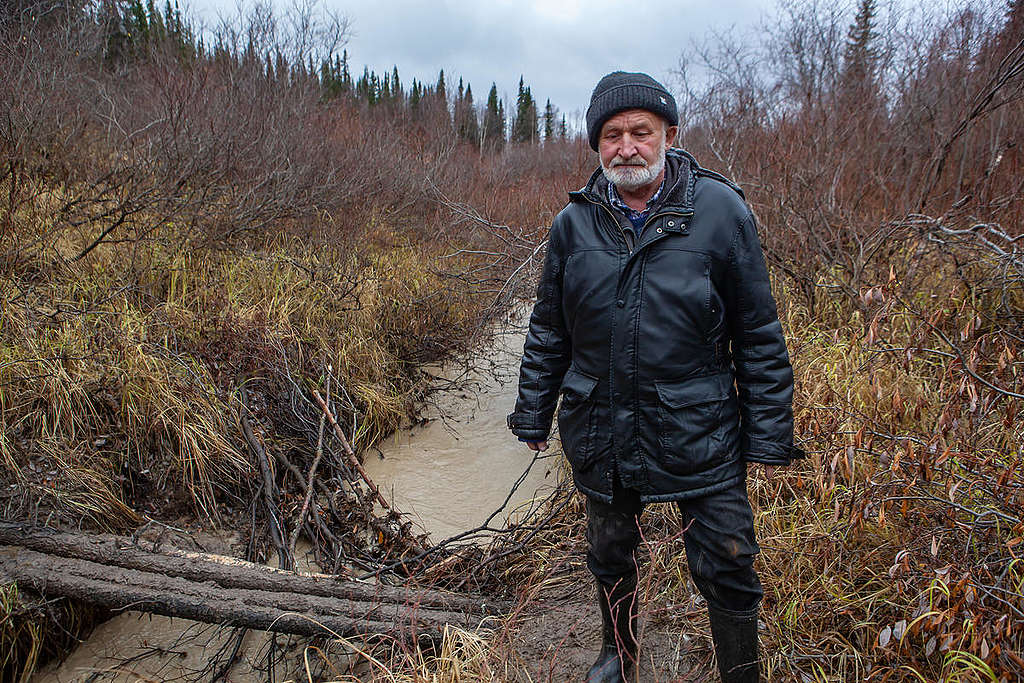 Our guide, Valeriy Bratenkov from the Save Pechora Committee,
tells us, “Their grandfathers and fathers used to hunt here, but what
have they done?! How can we walk here? It’s a mess. A new path is needed
but it takes so much work!”
Our guide, Valeriy Bratenkov from the Save Pechora Committee,
tells us, “Their grandfathers and fathers used to hunt here, but what
have they done?! How can we walk here? It’s a mess. A new path is needed
but it takes so much work!”
When we speak to the head of the seismic crew, Alexey Filechkin, he tells us, “Of course, we are trying to decrease the damage as nature here is so fragile. But the roads are poor so the tractors damage the ground.”
He’s right. When we get to the road, the deep engulfing mud we find is definitely not for walking. They had warned us against hiking to the top of the muddy stream, but we persist. It’s a five kilometre walk along a road with deep ruts full of mud.
After an hour and a half we finally get to the source of the brook, which flows down to the village before flowing into the backwater of the Pechora. We find what made the fish disappear from the river. A road has been laid through the brook. Before the road starts, this slightly yellow marsh brook is almost transparent. After the road, it’s completely muddy.
Heading back with my left boot soaked with water, I curse. I feel my back sweating and my wet foot starts freezing. In front of us we see a bend in the river Taiga and the flare from the jet fire on the horizon.
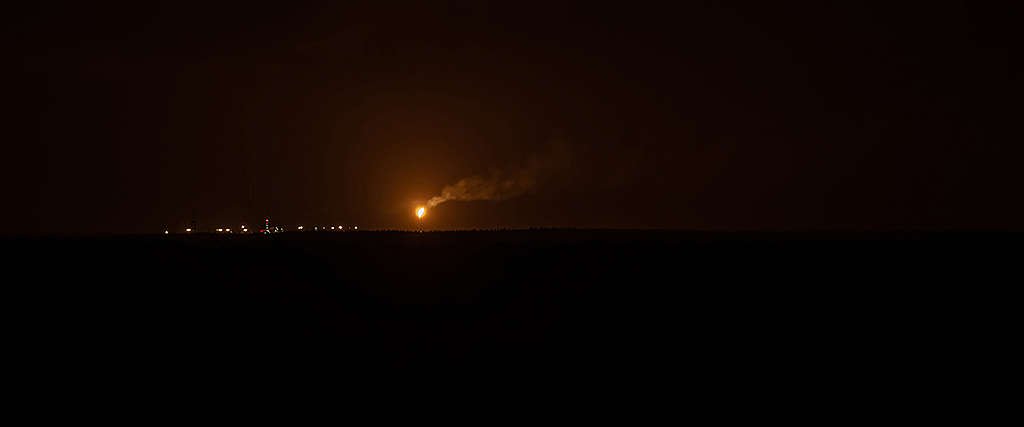 “I wonder why it reminds me Mordor so much,” our videographer, Vitya, asks.
“I wonder why it reminds me Mordor so much,” our videographer, Vitya, asks.
“Because it looks like the Eye of Sauron,” I reply.
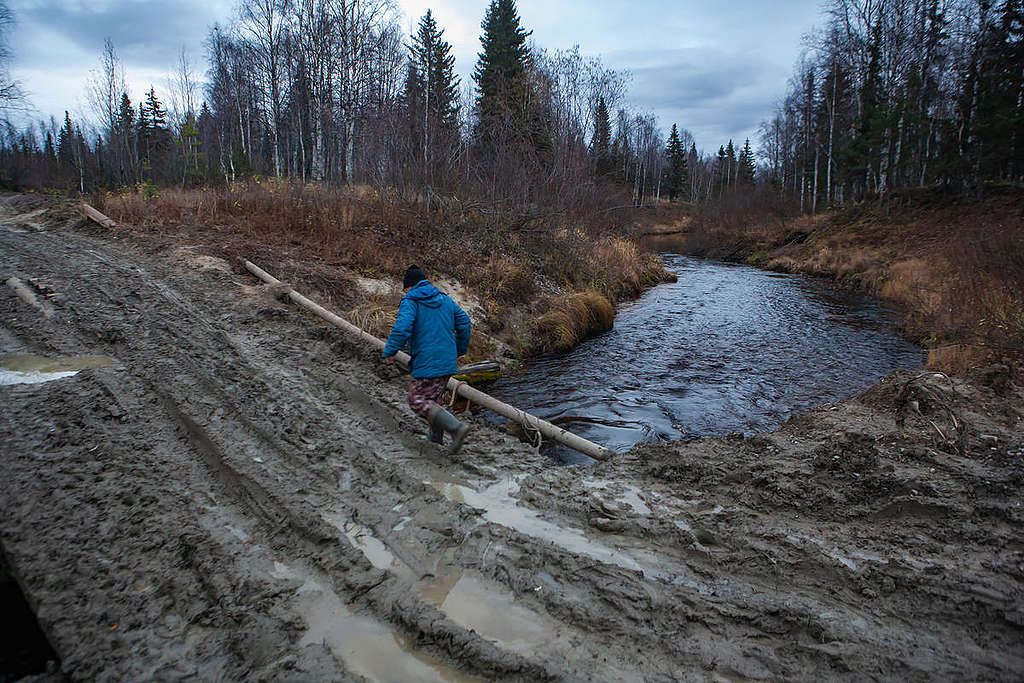 Humans have lived here since the Upper
Palaeolithic age. Traces of stone tool tips and mammoth tusks are
sometimes found by the current inhabitants. Oil was found near the Usa
River for the first time in 1960. The landscape has changed irreversibly
since.
Humans have lived here since the Upper
Palaeolithic age. Traces of stone tool tips and mammoth tusks are
sometimes found by the current inhabitants. Oil was found near the Usa
River for the first time in 1960. The landscape has changed irreversibly
since.
The forest near the village doesn’t smell like a forest anymore.
The largest oil spill on land happened here, in 1994, not far from the Kolva village – it was listed in the Guinness Book of Records. Between 100,000 to 300,000 tons of oil was spilt. It seriously damaged the environment in the whole area of the Pechora River. Livestock died. Disease rates amongst adults and children increased.
The head of the Komi Republic at the time claimed that not a single drop of oil got into the Pechora river. But ships going up along the river told a different story. “Even when the wind was strong, there were no waves because of the thick oil layer on the water,” says Nikolay Fyodorov, another member of the Save Pechora Committee who takes us to view the devastation.
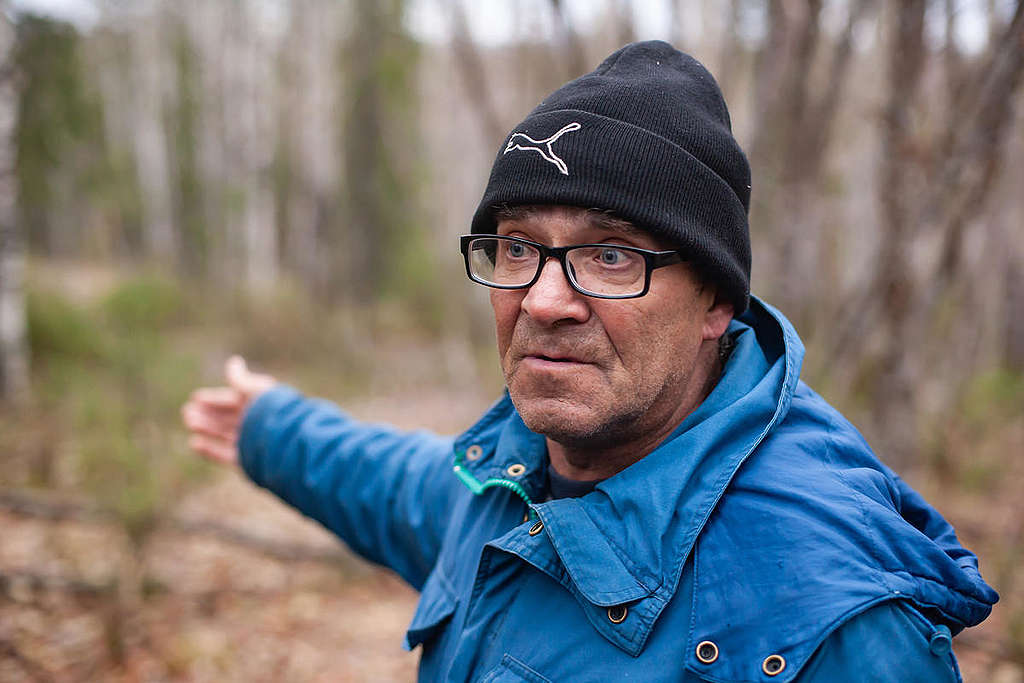 On top of oil spills, the forest here
has been damaged immensely. “People say that they would give up engines
and petrol, if it meant there were no more seismic surveys. They’ve cut
down so much of the forest that I don’t recognised it anymore. I start
to lose my way,” says Nikolay. He grew up here, worked on a collective
farm, and is now retired.
On top of oil spills, the forest here
has been damaged immensely. “People say that they would give up engines
and petrol, if it meant there were no more seismic surveys. They’ve cut
down so much of the forest that I don’t recognised it anymore. I start
to lose my way,” says Nikolay. He grew up here, worked on a collective
farm, and is now retired.
Valeriy Popov, a former worker of the Usinsk district forestry administration spoke at a meeting of the SPC: “It used to be forbidden to conduct seismic exploration in the water protection area. But now, they’ve sprung into the floodplain. I contacted the company. I asked, why were they cutting the trees so rapaciously? There are people living here. These are northern forests, not gardens – we’re glad if we can pick some berries and mushrooms in the forests, hunt and fish. But they say they have a plan.
“They’re cutting forest every 300 meters. I decided to go and have a look. They’ve turned our paths into a mess, we even can’t walk there because of the mud. I went picking berries and mushrooms, and didn’t see a single mouse, no animals, hazel grouses, partridges, wood grouses, hares. The wood is completely abandoned.”
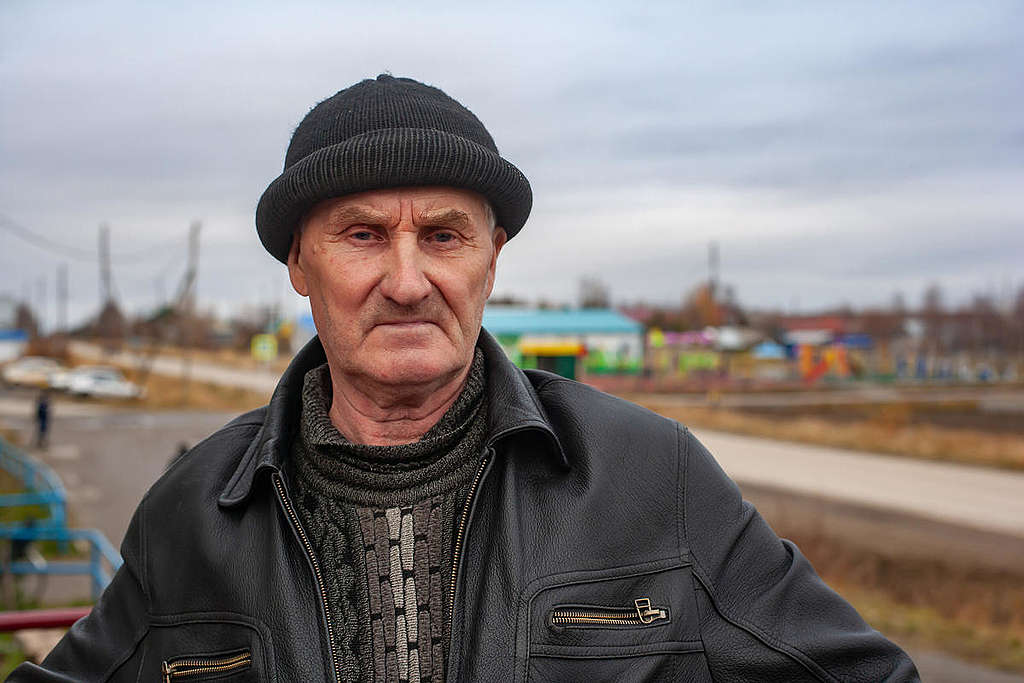 You can hardly find a person in
Ust-Usa – as in any other village along the river Taiga – who wouldn’t
pick berries and mushrooms. It’s why these forests are so important to
them.
You can hardly find a person in
Ust-Usa – as in any other village along the river Taiga – who wouldn’t
pick berries and mushrooms. It’s why these forests are so important to
them.
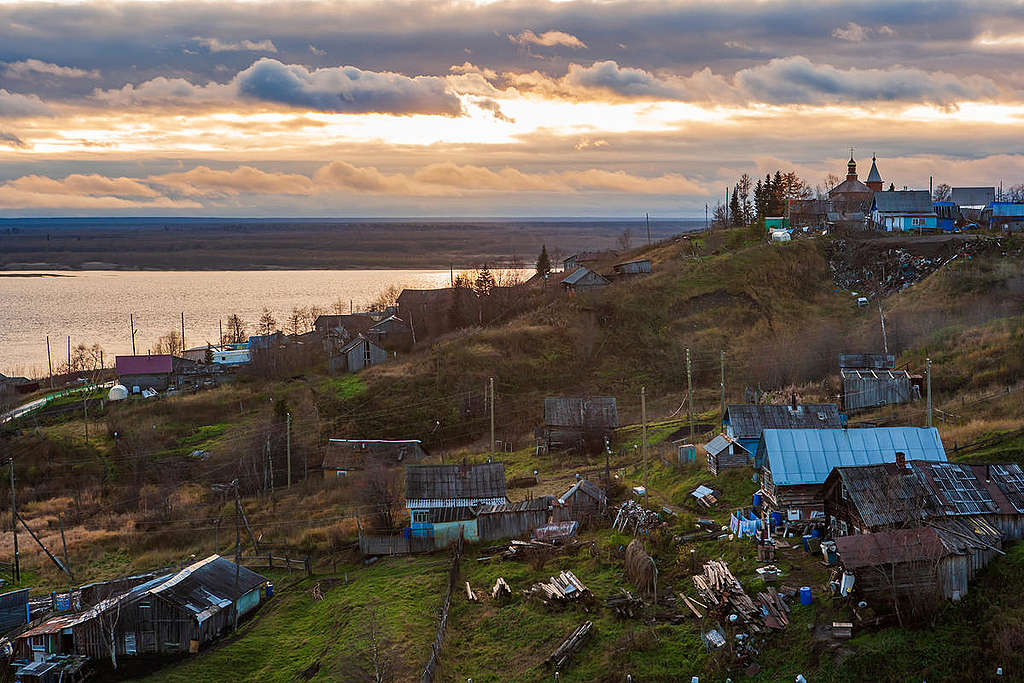 The seismic survey has shaken
Novikbozh in the literal sense of the word. They were conducting
explosions in April, a local, Galina Chuprova recalls. “Houses were
trembling; people called me in the morning to tell me, “Galya, you know,
our houses are bouncing.” Someone had their fridge open; their food
fell out.”
The seismic survey has shaken
Novikbozh in the literal sense of the word. They were conducting
explosions in April, a local, Galina Chuprova recalls. “Houses were
trembling; people called me in the morning to tell me, “Galya, you know,
our houses are bouncing.” Someone had their fridge open; their food
fell out.”
The tundra is now as full of lights as if it were a city. A well at the Alabushin oilfield, just 26 km away from the village, was burning for a month in spring 2017 and nobody could do anything. “According to the media, local people were not exposed to any threat, but black smoke was deposited throughout our fields, on our gardens, in our lungs. Where is the guarantee that it won’t happen again?” Galina tells us.
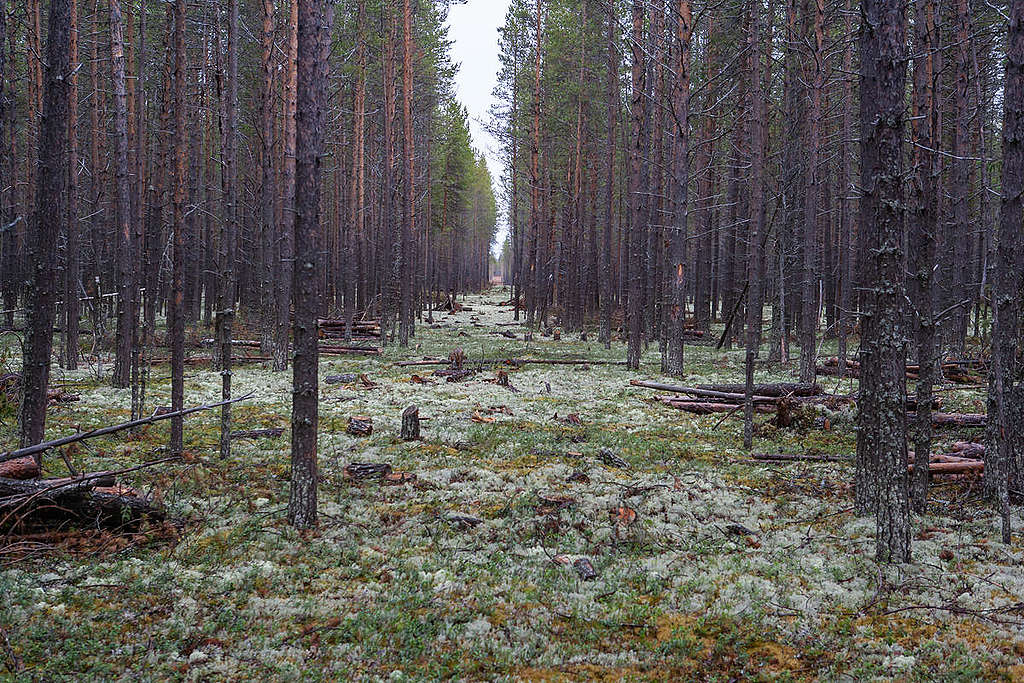 Lukoil is still expanding its oil
exploration efforts to the detriment of the local environment. “Since
last year, they’ve been cutting profiles barely a metre from the lake.
When we went ice fishing in the spring, there were lots of perches and
pikes. Now there are no fish at all,” one of the local hunters tells us.
“All the winter there was a roar from explosions, from operating diesel
engines and pumps in the drilling derricks.”
Lukoil is still expanding its oil
exploration efforts to the detriment of the local environment. “Since
last year, they’ve been cutting profiles barely a metre from the lake.
When we went ice fishing in the spring, there were lots of perches and
pikes. Now there are no fish at all,” one of the local hunters tells us.
“All the winter there was a roar from explosions, from operating diesel
engines and pumps in the drilling derricks.”
“The high government starts making a mess – to get oil at any price. Well, let them get the oil, but nothing will be left for people,” a pensioner, Nikolay Kanev sums up the feelings of all the people we’ve spoken to in villages along the river.
Behind every oil exploration site is a village with a seesaw near the houses, with flowers that have still not frozen, with people who have dreams. And they are more important than the oil that lies beneath their feet.
Original text in Russian by Irina Kozlovskikh, translated by Elena Sakirko

Aerial view of some the destruction caused by the heavy seismic vehicles in the forest © Igor Podgorny / Greenpeace
Forests are cut down in search of new oil deposits. Streams and swamps get polluted. But despite the protests, seismic surveying is still happening. Here’s what we found on an expedition to the region.

© Greenpeace / Ilona Zhuravleva
Kushor
The muddy rivers of Mordor
The village of Kushor in the Komi Republic, north western Russia © Igor Podgorny / Greenpeace
When we visit the workers at the Lukoil site, they’re fetching water from the marsh brook in the forest. It’s a little yellow and cloudy, but the only pure water here is in the well of a local man named Ivan, and there’s not enough for everyone.
We’re visiting a Seismic profile; a clear-cut used to place the facilities and equipment to conduct works on mineral exploration. We find paths that the locals use to pick berries and mushrooms and to hunt. Traditionally each Komi family has a right to own a path which provides them food all year.

Valery Bratenkov, an activist from the Save Pechora Committee © Igor Podgorny / Greenpeace
When we speak to the head of the seismic crew, Alexey Filechkin, he tells us, “Of course, we are trying to decrease the damage as nature here is so fragile. But the roads are poor so the tractors damage the ground.”
He’s right. When we get to the road, the deep engulfing mud we find is definitely not for walking. They had warned us against hiking to the top of the muddy stream, but we persist. It’s a five kilometre walk along a road with deep ruts full of mud.
After an hour and a half we finally get to the source of the brook, which flows down to the village before flowing into the backwater of the Pechora. We find what made the fish disappear from the river. A road has been laid through the brook. Before the road starts, this slightly yellow marsh brook is almost transparent. After the road, it’s completely muddy.
Heading back with my left boot soaked with water, I curse. I feel my back sweating and my wet foot starts freezing. In front of us we see a bend in the river Taiga and the flare from the jet fire on the horizon.

A sulphur fire burning in the distance © Igor Podgorny / Greenpeace
“Because it looks like the Eye of Sauron,” I reply.
Ust – Usa
“There isn’t even a mouse in these woods”
Walking through the ruined paths © Igor Podgorny / Greenpeace
The forest near the village doesn’t smell like a forest anymore.
The largest oil spill on land happened here, in 1994, not far from the Kolva village – it was listed in the Guinness Book of Records. Between 100,000 to 300,000 tons of oil was spilt. It seriously damaged the environment in the whole area of the Pechora River. Livestock died. Disease rates amongst adults and children increased.
The head of the Komi Republic at the time claimed that not a single drop of oil got into the Pechora river. But ships going up along the river told a different story. “Even when the wind was strong, there were no waves because of the thick oil layer on the water,” says Nikolay Fyodorov, another member of the Save Pechora Committee who takes us to view the devastation.

Nikolay Feodorov, another activist from the Save Pechora Committee © Igor Podgorny / Greenpeace
Valeriy Popov, a former worker of the Usinsk district forestry administration spoke at a meeting of the SPC: “It used to be forbidden to conduct seismic exploration in the water protection area. But now, they’ve sprung into the floodplain. I contacted the company. I asked, why were they cutting the trees so rapaciously? There are people living here. These are northern forests, not gardens – we’re glad if we can pick some berries and mushrooms in the forests, hunt and fish. But they say they have a plan.
“They’re cutting forest every 300 meters. I decided to go and have a look. They’ve turned our paths into a mess, we even can’t walk there because of the mud. I went picking berries and mushrooms, and didn’t see a single mouse, no animals, hazel grouses, partridges, wood grouses, hares. The wood is completely abandoned.”

Valeriy Popov © Igor Podgorny / Greenpeace
Novikbozh
Where the houses bounce
Novikbozh village © Igor Podgorny / Greenpeace
The tundra is now as full of lights as if it were a city. A well at the Alabushin oilfield, just 26 km away from the village, was burning for a month in spring 2017 and nobody could do anything. “According to the media, local people were not exposed to any threat, but black smoke was deposited throughout our fields, on our gardens, in our lungs. Where is the guarantee that it won’t happen again?” Galina tells us.

A path cut through the trees near Novikbozh village © Igor Podgorny / Greenpeace
“The high government starts making a mess – to get oil at any price. Well, let them get the oil, but nothing will be left for people,” a pensioner, Nikolay Kanev sums up the feelings of all the people we’ve spoken to in villages along the river.
Behind every oil exploration site is a village with a seesaw near the houses, with flowers that have still not frozen, with people who have dreams. And they are more important than the oil that lies beneath their feet.
Original text in Russian by Irina Kozlovskikh, translated by Elena Sakirko


No comments:
Post a Comment
Note: Only a member of this blog may post a comment.